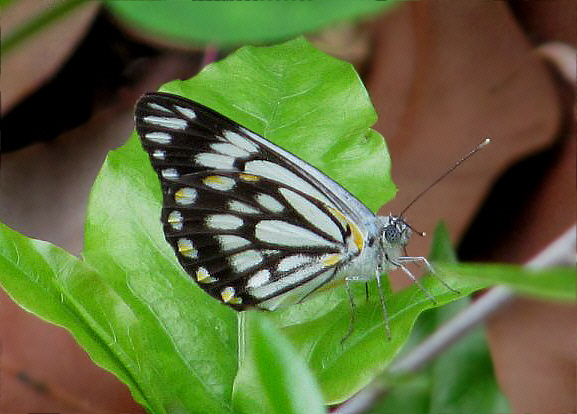
Introduction
The genus Anaphaeis is closely allied to Belenois and is included as a subgenus of Belenois by some workers. The species placed in this group include the Madagascan taxa antsianaka, grandidieri and mabella; anomala from Socotra island; the pan-African creona and occidentalius; the widespread aurota which occurs across Africa, Arabia and the India subcontinent; and java which is distributed from Java and Sulawesi to New Guinea, New Britain, New Ireland, Fiji and Australia.
Habitats
This species inhabits open scrubby areas where the larval foodplants flourish.
Lifecycle
The eggs are skittle-shaped with vertical ribbing, and are orange-yellow in colour. They are laid on the upper surface of leaves, with between 40-60 widely spaced eggs in a cluster. The larvae feed on Apophyllum and various Capparis species ( Capparaceae ). The fully grown larva is long, thin and cylindrical, dark purplish brown in colour, and dotted with small yellow tubercles. The pupa is pale straw with small black blotches and yellow tubercles. It is usually formed on the upperside of a leaf, fixed by the cremaster and a silken girdle.
Adult behaviour
Males often gather at patches of damp ground to imbibe mineralised moisture. Both sexes visit a wide range of flowers for nectar. This species is frequently takes part in mass migrations. It appears that males and females migrate separately as roosting aggregations comprising entirely of males have been recorded e.g. in October 2000 at Point Addis in Victoria. An alternative explanation could be that both sexes migrate together but that males considerably outnumber females, although this does not appear to be borne out in captive rearing.
